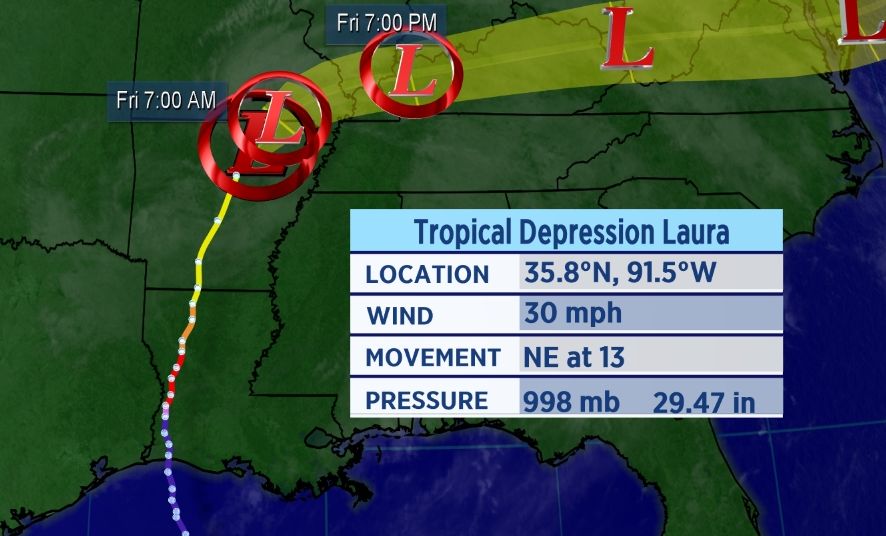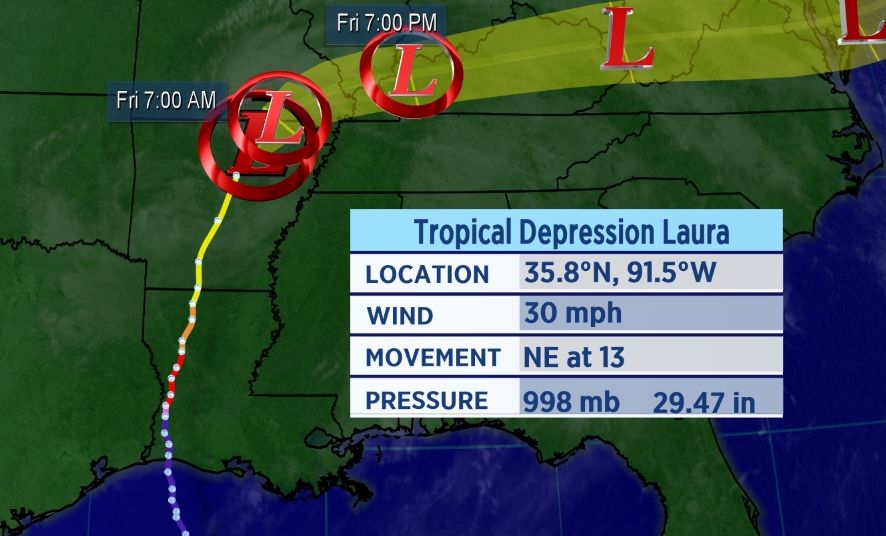Laura made landfall over Cameron, Louisiana early on Thursday morning as a powerful Category 4 storm, making it one of the strongest hurricanes to make a U.S. landfall in recent memory.
Thursday’s daylight started to show the damage coming out of the area. Six deaths have been reported so far.
Laura Makes Landfall
Laura officially made landfall as a high-end Category 4 hurricane at 1 a.m. CT on Thursday morning near Cameron, Louisiana, making it the strongest hurricane to make landfall on Louisiana since 1856.
Laura’s maximum sustained winds were estimated to be 150 mph, putting the storm into rare territory in terms of landfalling U.S. hurricanes.
Wind speeds up to 127 mph were recorded in Cameron as Laura’s northern eyewall moved through the city early on Thursday morning. Nearby Lake Charles, Louisiana recorded a wind gust of 133 mph on Thursday morning as well.
On Wednesday morning and ahead of the storm, the National Hurricane Center referred to the storm surge threat from Laura as “unsurvivable.” Up to 20 feet of storm surge was expected to flood much of southwestern Louisiana and far southeastern Texas. The governors of both Lousiana and Texas preemptively declared disaster orders.
More than 875,000 people were without power on Thursday.
Heavy rain spread far inland as Laura tracked north on Thursday. Parts of Louisiana received well over six inches of rain, while rainfall totals pushed four inches as far north as central Arkansas.
What to Expect

Forecast track of Laura.
Laura continues to track towards the east and is still bringing heavy rain.
States in the path of Laura could see up to 5 inches of additional rain. This could cause flash flooding, and streams, creeks, and rivers could overflow. Be aware of your surroundings, and remember to never drive through a flooded roadway.
Once we get into the afternoon, the threat for tornadoes could redevelop across the Mid-South and Tennessee Valley regions.
Laura will also produce swells along the north-central and northeastern Gulf coast. This will lead to a threat of rip currents and life-threatening surf.
Category 4 Landfalls Are Rare
Since 1851, only 26 hurricanes of a Category 4 or 5 strength have made landfall on the continental United States. That means that a Category 4 or 5 landfall on the United States takes place only once every six or seven years.
Since 1851, Louisiana has had only three Category 4 hurricanes make landfall, according to Colorado State Univeristy hurricane researcher Dr. Phil Klotzbach.
No Category 5s on record have hit the state, according to Klotzbach.
Since 1894, Louisiana has only seen one Category 4 landfall, Hurricane Betsy back in 1965.
Laura tied for the strongest hurricane to make landfall in the state of Louisiana, alongside the Last Island hurricane of 1856. Klotzbach also noted that Laura is the strongest August Gulf of Mexico hurricane since Hurricane Katrina in 2005.
Setting Records
Laura became the earliest “L” named storm to ever form in the Atlantic, and an M-named storm had never formed in the month of August in the Atlantic before Marco.
These storms follow what has already been a record-setting season in the Atlantic.
With 13 storms already this year, this is the fastest start to an Atlantic hurricane season in recorded history. The climatological peak of hurricane season is in mid-September.
With Marco and Laura making landfall, the tally is now up to seven.
As Laura continues on, here are five things you might not know about hurricanes.




